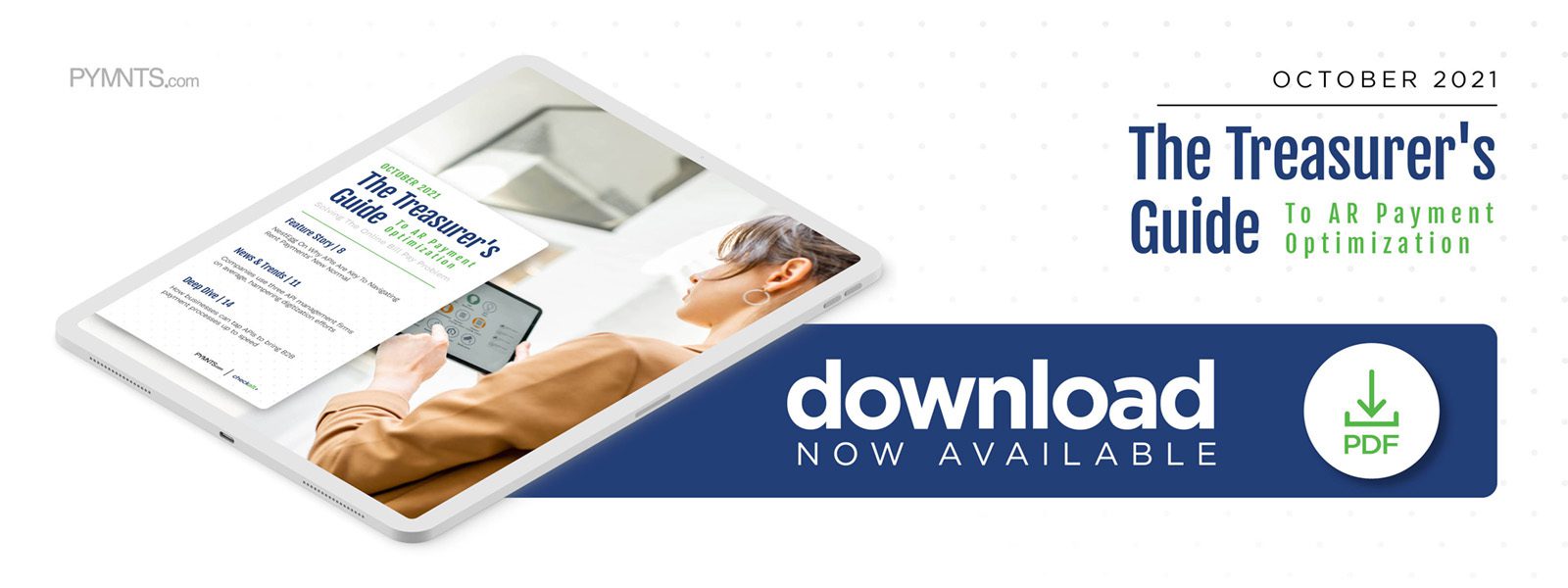Deep Dive: How Businesses Can Tap APIs To Speed Up Lagging B2B Payments Processes

Some consumers already were using digital payments options before the pandemic made them a necessity — especially younger generations such as millennials and Generation Z, demographics that control $143 billion in collective spending power. The pandemic’s impact on the business-to-business (B2B) payments space has been even more dramatic, with many businesses worldwide forced to adopt virtual tools in place of paper checks and invoices practically overnight. More companies came to see their manual processes as pain points during the health crisis, with nearly one-third of firms in a September 2020 PYMNTS report saying paper-based payments were hampering their credit functions.
Digitizing accounts payable (AP) and accounts receivable (AR) has become a top goal for businesses as their customers, vendors and partners move away from paper. Achieving this goal requires companies to upgrade their payments processes for virtual channels, a transformation with its own pain points. This is where implementing technologies such as application program interfaces (APIs) could prove critical. Recent trends indicate that APIs will play an essential role in the future ecosystems of B2B and consumer payments, with one report predicting that half of all B2B transactions will be sent via APIs by 2023.
The following Deep Dive examines how the pandemic influenced the payment wants and needs of consumers and businesses. It also explores how API and enterprise resource planning (ERP) systems can help companies keep pace with those desires and how these technologies are likely to impact the future of digital payments.
Digital payments need digital support
As consumers’ expectations for swift and seamless transactions have spread to the B2B world in recent years, businesses have been under increasing pressure to digitize payments. The pandemic’s impact became the last straw for many in 2020, pushing more companies to embrace digital B2B payments. Cash and paper check payments declined 16 percent year over year in 2020 to make up 45 percent of B2B payments, and Automated Clearing House (ACH) payments rose above $10 trillion for the first time in history, accounting for more than 39 percent of these payments. Financial institutions (FIs) are taking steps to meet this growing imperative, laying the groundwork for greater real-time payments availability and promoting innovation efforts for related digital tools. The U.S. Treasury’s Bureau of the Fiscal Service, for example, recently announced its goal to make 99 percent of its payments electronic by 2030 and to increase digitization of its paper-based payments collection.
Cash and paper checks still dominate the B2B arena, however, and small businesses still rely heavily upon checks. Forty percent of small business sales occur through one-time buyers, for example, most of whom send suppliers payments via check — potentially impeding the supplier’s cash flow and contributing to other lasting operational problems. Companies also report lingering frictions in their AP and AR processes, with recent PYMNTS data finding that 15 percent of B2B receivables reach their target recipients late. Part of what hinders businesses from digitizing their payment processes is that many companies do not have the digital infrastructure to execute these shifts. Upgrading infrastructure to allow movement away from their previously siloed payment processes can be especially tricky for smaller businesses, as they operate on slimmer margins than their larger competitors and may lack the necessary funds to build out systems that support swifter, digital payment options.. This is where technologies such as APIs can come into play.
APIs and next-gen B2B payments
Tapping APIs can help businesses — notably smaller companies — better streamline their B2B and even consumer-facing payments, allowing support through multiple methods and rails all in one place. Businesses are expressing greater interest in the potential benefits of APIs and related technologies such as ERP systems, with 73 percent of treasurers and chief financial officers in one recent study saying they view APIs as essential to corporate treasury groups. Fifty-six percent of respondents named information reporting as APIs’ chief use, as the technology enables them to connect to banks or other financial service partners more easily.
APIs also can help businesses embed finance solutions directly into their websites and payment flows, making payments more convenient for their buyers and creating positive engagement that can boost loyalty. Supporting such payments solutions could offer companies a key advantage over their competitors who still are clinging to paper checks siloed payment processes, especially as demand rises among consumers and businesses for swifter, digitally optimized payment experiences. Companies looking to stay competitive and improve cash flow should consider how APIs could facilitate digitization and help businesses to accept a more diverse number of payment methods for quicker, more seamless B2B payments.

